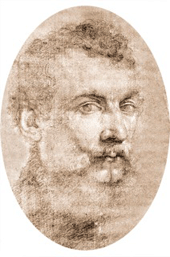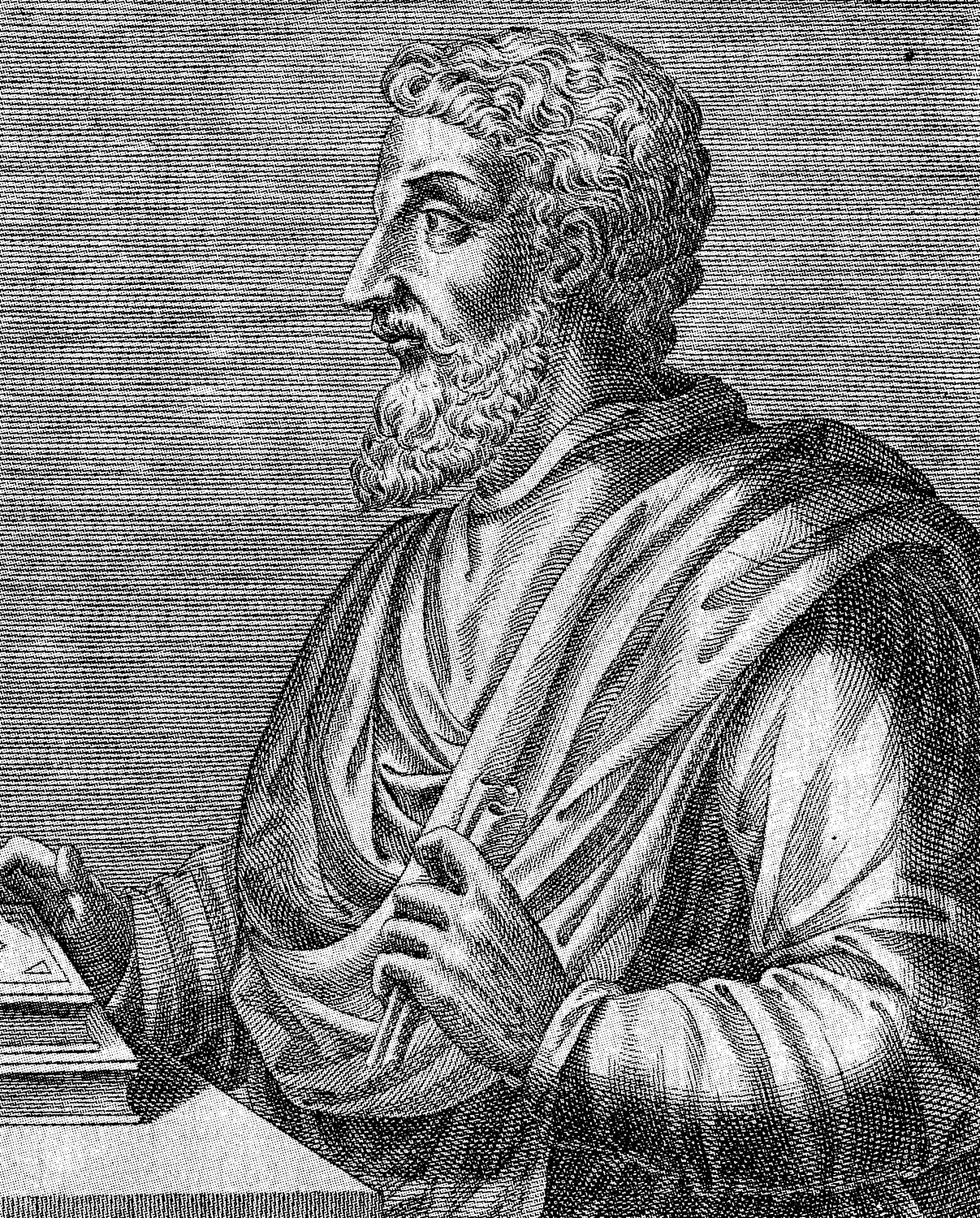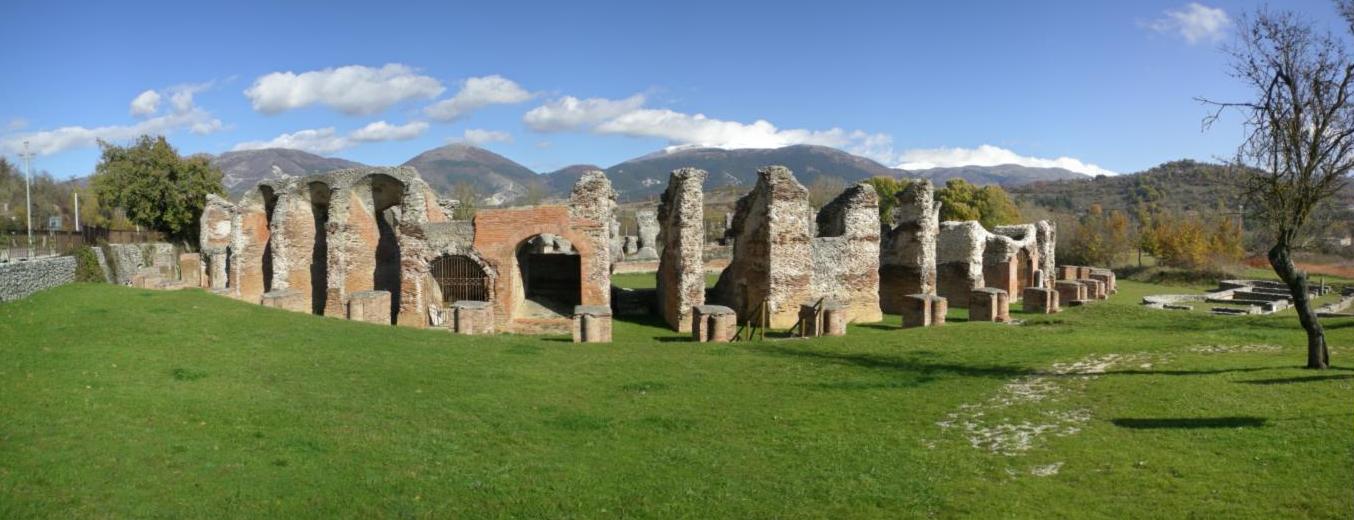|
Tivoli, Italy
Tivoli ( ; ; ) is a town and in Lazio, Central Italy, north-east of Rome, at the falls of the Aniene river where it issues from the Sabine Hills. The city offers a wide view over the Roman Campagna. History Gaius Julius Solinus cites Cato the Elder's lost ''Origines'' for the story that the city of Tibur was founded by Catillus the Arcadian, a son of Amphiaraus, who came there having escaped the slaughter at Thebes, Greece. Catillus and his three sons Tiburtus, Coras, and Catillus drove out the Siculi from the Aniene plateau and founded a city they named Tibur in honor of Tiburtus. According to another account, Tibur was a colony of Alba Longa. Historical traces of settlement in the area date back to the thirteenth century BC. ''Tibur'' may share a common root with the river Tiber and the Latin praenomen ''Tiberius''. From Etruscan times Tibur, a Sabine city, was the seat of the Tiburtine Sibyl. There are two small temples above the falls, the rotunda traditionally assoc ... [...More Info...] [...Related Items...] OR: [Wikipedia] [Google] [Baidu] |
Villa D'Este
The Villa d'Este is a 16th-century villa in Tivoli, Lazio, Tivoli, near Rome. It is a masterpiece of Italian architecture and garden design, famous for its terraced hillside Italian Renaissance garden and the ingenuity of its architectural features (fountains, ornamental basins, ceilings, etc.), it is an incomparable example of a 16th-century Italian garden, which later had a huge influence on landscape design in Europe. It is now an Italian state museum, and is listas a World Heritage Sites, UNESCO World Heritage Site since 2001. History The Villa was commissioned by Cardinal Ippolito II d'Este (1509–1572), second son of Alfonso I d'Este, the Duke of Ferrara and grandson of Pope Alexander VI through his mother Lucrezia Borgia. The Este family had been lords of Ferrara since 1393, and were famous as patrons of the arts and of the humanist scholars of the Renaissance. As a second son, Ippolito was destined for a career in the church; he was named archbishop of Milan when he was ... [...More Info...] [...Related Items...] OR: [Wikipedia] [Google] [Baidu] |
Thebes, Greece
Thebes ( ; , ''Thíva'' ; , ''Thêbai'' .) is a city in Boeotia, Central Greece (administrative region), Central Greece, and is one of the oldest continuously inhabited cities in the world. It is the largest city in Boeotia and a major center for the area along with Livadeia and Tanagra. It played an important role in Greek myths, as the site of the stories of Cadmus, Oedipus, Dionysus, Heracles and others. One myth had the city founded by Agenor, which gave rise to the (now somewhat obscure) name "Agenorids" to denote Thebans. Archaeological excavations in and around Thebes have revealed a Mycenaean Greece, Mycenaean settlement and clay tablets written in the Linear B script, indicating the importance of the site in the Bronze Age. Thebes was the largest city of the ancient region of Boeotia and was the leader of the Boeotian confederacy. It was a major rival of Classical Athens, ancient Athens, and sided with the Achaemenid Empire, Persians during the Second Persian invasi ... [...More Info...] [...Related Items...] OR: [Wikipedia] [Google] [Baidu] |
Marcus Terentius Varro
Marcus Terentius Varro (116–27 BCE) was a Roman polymath and a prolific author. He is regarded as ancient Rome's greatest scholar, and was described by Petrarch as "the third great light of Rome" (after Virgil and Cicero). He is sometimes called Varro Reatinus ("Varro of Rieti") to distinguish him from his younger contemporary Varro Atacinus ("Varro of Atax"). Biography Varro was born in or near Reate (now Rieti in Lazio) into a family thought to be of equestrian rank. He always remained close to his roots in the area, owning a large farm in the Reatine plain (reported as near Lago di Ripasottile,) until his old age. He supported Pompey, reaching the office of praetor, after having served as tribune of the people, '' quaestor'' and '' curule aedile''. It is probable that Varro was discontented with the course on which Pompey entered when the First Triumvirate formed 60 BC, and he may thus have lost his chance of rising to the consulship. He actually ridiculed th ... [...More Info...] [...Related Items...] OR: [Wikipedia] [Google] [Baidu] |
Vesta (mythology)
Vesta () is the virgin goddess of the hearth, home, and family in Roman religion. She was rarely depicted in human form, and was more often represented by the fire of her temple in the Forum Romanum. Entry to her temple was permitted only to her priestesses, the Vestal Virgins. Their virginity was deemed essential to Rome's survival; if found guilty of inchastity, they were buried or entombed alive. As Vesta was considered a guardian of the Roman people, her festival, the '' Vestalia'' (7–15 June), was regarded as one of the most important Roman holidays. During the ''Vestalia'' privileged matrons walked barefoot through the city to the temple, where they presented food-offerings. Such was Vesta's importance to Roman religion that following the rise of Christianity, hers was one of the last non-Christian cults still active, until it was forcibly disbanded by the Christian emperor Theodosius I in AD 391. The myths depicting Vesta and her priestesses were few; the most notable ... [...More Info...] [...Related Items...] OR: [Wikipedia] [Google] [Baidu] |
Tiburtine Sibyl
The Tiburtine Sibyl or Albunea was a Roman sibyl, whose seat was the ancient Etruscan town of Tibur (modern Tivoli). The mythic meeting of Augustus with the Sibyl, of whom he inquired whether he should be worshiped as a god, was often depicted by artists from the late Middle Ages onwards. In the versions known to the later Middle Ages, for example the account in the '' Golden Legend'', Augustus asked the Sibyl whether he should be worshipped as a god, as the Roman Senate had ordered. She replied by showing him a vision of a young woman with a baby boy, high in the sky, while a voice from the heavens said "This is the virgin who shall conceive the saviour of the world", who would eclipse all the Roman gods. The episode was regarded as a prefiguration of the Biblical Magi's visit to the new-born Jesus and connected Ancient and Christian Rome, implying foreknowledge of the coming of Christ by the greatest of Roman emperors. Whether the sibyl in question was the Etruscan Sibyl ... [...More Info...] [...Related Items...] OR: [Wikipedia] [Google] [Baidu] |
Sabine
The Sabines (, , , ; ) were an Italic people who lived in the central Apennine Mountains (see Sabina) of the ancient Italian Peninsula, also inhabiting Latium north of the Anio before the founding of Rome. The Sabines divided into two populations just after the founding of Rome, which is described by Roman legend. The division, however it came about, is not legendary. The population closer to Rome transplanted itself to the new city and united with the preexisting citizenry, beginning a new heritage that descended from the Sabines but was also Latinized. The second population remained a mountain tribal state, coming finally to war against Rome for its independence along with all the other Italic tribes. Afterwards, it became assimilated into the Roman Republic. Etymology The Sabines derived directly from the ancient Umbrians and belonged to the same ethnic group as the Samnites and the Sabelli, as attested by the common ethnonyms of ''Safineis'' (in ancient Gr ... [...More Info...] [...Related Items...] OR: [Wikipedia] [Google] [Baidu] |
Etruscans
The Etruscan civilization ( ) was an ancient civilization created by the Etruscans, a people who inhabited Etruria in List of ancient peoples of Italy, ancient Italy, with a common language and culture, and formed a federation of city-states. After adjacent lands had been conquered its territory covered, at its greatest extent, roughly what is now Tuscany, western Umbria and northern Lazio, as well as what are now the Po Valley, Emilia-Romagna, south-eastern Lombardy, southern Veneto and western Campania. A large body of literature has flourished on the origins of the Etruscans, but the consensus among modern scholars is that the Etruscans were an indigenous population. The earliest evidence of a culture that is identifiably Etruscan dates from about 900 BC. This is the period of the Iron Age Villanovan culture, considered to be the earliest phase of Etruscan civilization, which itself developed from the previous late Bronze Age Proto-Villanovan culture in the same region, p ... [...More Info...] [...Related Items...] OR: [Wikipedia] [Google] [Baidu] |
Tiberius (praenomen)
Tiberius ( , ), feminine Tiberia, is a Latin ''praenomen'', or personal name, which was used throughout Roman history. Although not especially common, it was used by both patrician and plebeian families. The name is usually abbreviated Ti., but occasionally Tib.''Dictionary of Greek & Roman Biography & Mythology'' For most of Roman history, Tiberius was about the twelfth or thirteenth most common praenomen. It was not used by most families, but was favored by several, including the ''gentes Aemilii'', ''Claudii'', and ''Sempronii''. It was probably more widespread amongst the plebeians, and it became more common in imperial times. The name survived the collapse of Roman civil institutions in the 5th and 6th centuries, and continued to be used into modern times. Origin and meaning of the name The origin of Tiberius was obscure even in Roman times, although popular etymology sometimes connected it with the ancient city of Tibur. It was also associated with the sacred river, the ... [...More Info...] [...Related Items...] OR: [Wikipedia] [Google] [Baidu] |
Praenomen
The praenomen (; plural: praenomina) was a first name chosen by the parents of a Ancient Rome, Roman child. It was first bestowed on the ''dies lustricus'' (day of lustration), the eighth day after the birth of a girl, or the ninth day after the birth of a boy. The praenomen would then be formally conferred a second time when girls married, or when boys assumed the ''toga virilis'' upon reaching manhood. Although it was the oldest of the ''tria nomina'' commonly used in Roman naming conventions, by the late republic, most praenomina were so common that most people were called by their praenomina only by family or close friends. For this reason, although they continued to be used, praenomina gradually disappeared from public records during imperial times. Although both men and women received praenomina, women's praenomina were frequently ignored, and they were gradually abandoned by many Roman families, though they continued to be used in some families and in the countryside. Backg ... [...More Info...] [...Related Items...] OR: [Wikipedia] [Google] [Baidu] |
Tiber
The Tiber ( ; ; ) is the List of rivers of Italy, third-longest river in Italy and the longest in Central Italy, rising in the Apennine Mountains in Emilia-Romagna and flowing through Tuscany, Umbria, and Lazio, where it is joined by the River Aniene, to the Tyrrhenian Sea, between Ostia (Rome), Ostia and Fiumicino. It Drainage basin, drains a basin estimated at . The river has achieved lasting fame as the main watercourse of the city of Rome, which was founded on its eastern banks. The river rises at Mount Fumaiolo in Central Italy and flows in a generally southerly direction past Perugia and Rome to meet the sea at Ostia (town), Ostia. The Tiber has advanced significantly at its mouth, by about , since Roman times, leaving the ancient port of Ostia Antica (archaeological site), Ostia Antica inland."Tiber River". ''Encyclopædia Britannica''. 2006 However, it does not form a proportional river delta, delta, owing to a strong north-flowing sea current close to the shore, d ... [...More Info...] [...Related Items...] OR: [Wikipedia] [Google] [Baidu] |
Alba Longa
Alba Longa (occasionally written Albalonga in Italian sources) was an ancient Latins (Italic tribe), Latin city in Central Italy in the vicinity of Lake Albano in the Alban Hills. The ancient Romans believed it to be the founder and head of the Latin League, before it was destroyed by the Roman Kingdom around the middle of the 7th century BC and its inhabitants were forced to settle in Rome. In legend, Romulus and Remus, founders of Rome, had come from the royal dynasty of Alba Longa, which in Virgil's ''Aeneid'' had been the bloodline of Aeneas, a son of Venus (mythology), Venus.Livy, ''Ab urbe condita libri (Livy), Ab urbe condita'', s:From the Founding of the City/Book 1#28, 1:28–30 According to Livy, Roman patrician families such as the Julia gens, Julii, Servilia gens, Servilii, Quinctia gens, Quinctii, Gegania gens, Geganii, Curiatia gens, Curiatii and Cloelia gens, Cloelii originated in Alba Longa. Archaeology Livy said of Alba Longa that it was founded by Ascaniu ... [...More Info...] [...Related Items...] OR: [Wikipedia] [Google] [Baidu] |
Siculi
The Sicels ( ; or ''Siculī'') were an Indo-European tribe who inhabited eastern Sicily, their namesake, during the Iron Age. They spoke the Siculian language. After the defeat of the Sicels at the Battle of Nomae in 450 BC and the death of Sicel leader Ducetius in 440 BC, the Sicel state broke down and the Sicel culture merged into Magna Graecia. History Archaeological excavation has shown some Mycenean influence on Bronze Age Sicily. The earliest literary mention of Sicels is in the ''Odyssey''. Homer also mentions Sicania, but makes no distinctions: "they were (from) a faraway place and a faraway people and apparently they were one and the same" for Homer, Robin Lane Fox notes. It is possible that the Sicels and the Sicani of the Iron Age had consisted of an Illyrian population who (as with the Messapians) had imposed themselves on a native, Pre-Indo-European ("Mediterranean") population. Thucydides and other classical writers were aware of the traditions accordin ... [...More Info...] [...Related Items...] OR: [Wikipedia] [Google] [Baidu] |







